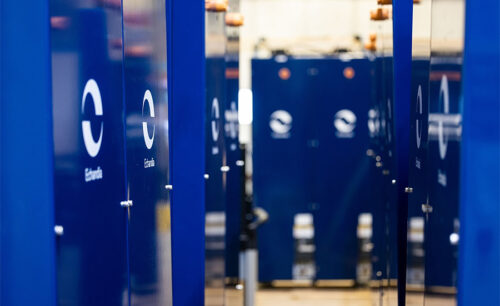

Finding the most cost-efficient battery system, part 2
- Insights
- 4 November 2021
Part 2: The financial perspective
There is no one-size-fits-all solution for a cost-efficient battery system in a maritime application. Cost efficiency can be defined in different ways depending on the area, conditions and needs that govern your specific operational profile. In this second article, regarding cost-efficiency, we look at the financial perspective; cost over time and ROI.
Minimal environmental impact – enhanced safety aspects
Lithium-ion battery technology has already found many niches in the maritime world. With their high energy density, lithium-ion batteries require limited space while delivering remarkable power.
Ample energy storage in battery systems, paired with modern battery management systems (BMS), enhances safety in several ways and substantially minimizes environmental impact.
Using battery solutions can decrease environmental impacts by either optimizing diesel emissions through peak shaving or eliminating them during critical periods such as operating in environmentally controlled or sensitive areas. Or, completely replace fossil-based energy sources in short to mid-range maritime operations, like inland or coastline transports and commuter ferries.
Calculating effective life cycle cost
To determine whether a given type and dimension of a battery system is cost-efficient from a sheer financial perspective, we need to look at the effective life cycle cost.
The biggest concern with the use of batteries is the replacement cost when they exceed their life cycle. The life span is determined by the battery’s construction, chemistry, usage, and relation to the depth of discharge (DOD). DOD is expressed with the percentage of the discharged battery relative to the battery’s total capacity during each discharge cycle. With less depletion in each cycle, the battery life is prolonged significantly. With more depletion, life is shortened.
The battery’s price can be normalized to cost per kWh, per cycle, based on the number of charge/discharge cycles it can survive. Its effective life cycle cost can be found using the following equation:
Battery cost per kWh of storage
—————————————— = Effective Life Cycle Cost
Cycle battery life
Finding the optimum balance
The potential cycle life a battery can achieve is determined both by its construction and its usage. The cycle life is related to the depth of discharge (DOD), or the percent of the battery’s energy capacity that is depleted during each discharge cycle.
We have also learned from our previous article on the subject that reducing the use of a battery from 80% to 50% DOD can double the cycle life of modern lithium-ion batteries. However, while decreasing the depth of discharge increases battery life, it also reduces the available energy onboard – which means we need to calculate with buying more batteries to store enough power for the task at hand.
An optimum balance between an as high energy output as possible (high % DOD) from an as small battery bank as possible (less weight/space onboard, lower investment) can endure as many cycles as possible with as little degradation as possible over time.
A comparison between NMC, LFP, and LTO
In a study by Elliott Bay Design Group, the three chemistries NMC, LFP and LTO were compared in how they performed towards a fixed payback time, calculated by the relationship between battery life and DOD.
The study showed that all chemistries achieved payback within the limit. But the LTO batteries achieved the fastest payback in the shortest period of all, and most importantly, at the highest DOD of all three chemistries. Meaning LTO batteries are the most cost-efficient choice from a financial point of view.



